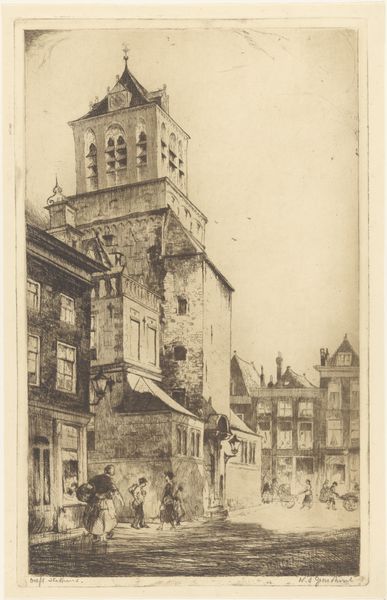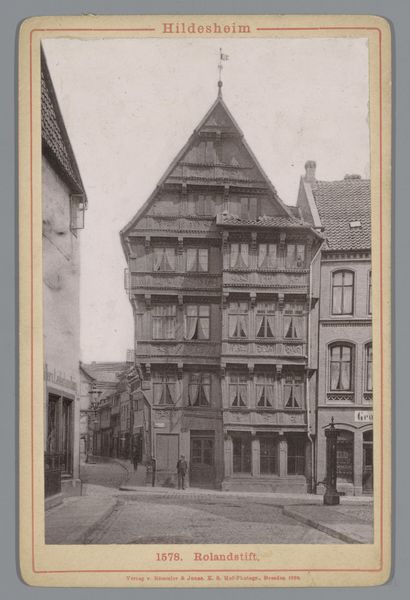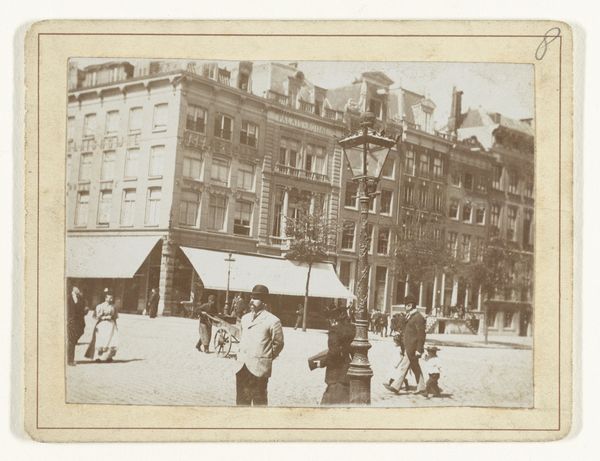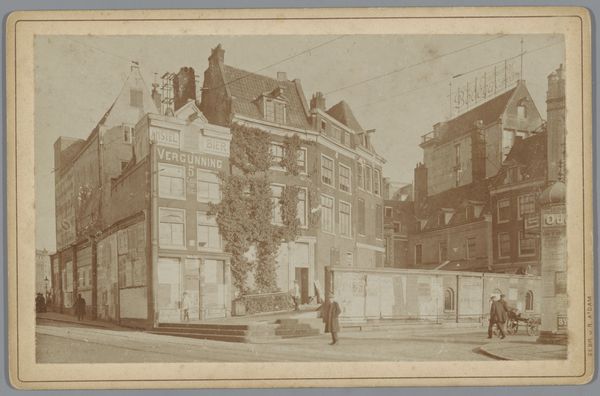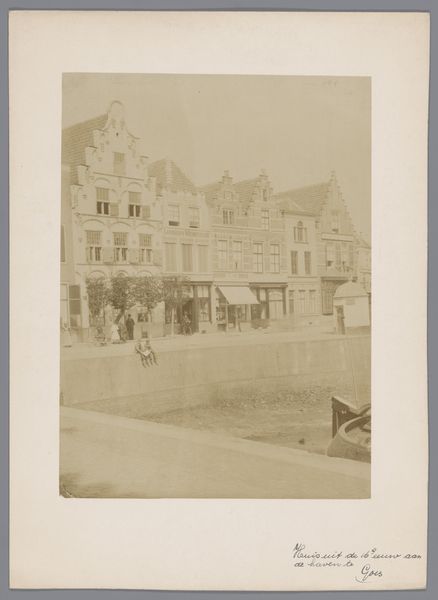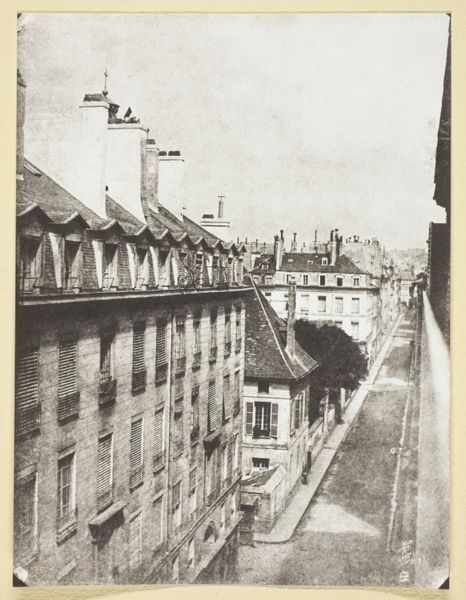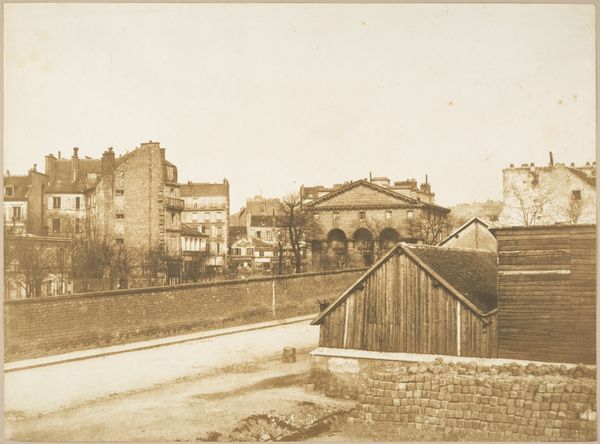
print, photography
#
pictorialism
# print
#
photography
#
19th century
#
cityscape
Dimensions: height 165 mm, width 107 mm
Copyright: Rijks Museum: Open Domain
Editor: So, this is "Gezicht op de Saint-Charles te Sedan" – a photograph, or rather a print made from a photograph, by E. Genin, sometime between 1880 and 1910. The way the light falls on the cobblestones gives it such a stark, almost melancholy feel. What do you see in this piece? Curator: I see more than just a cityscape; I see a document of a specific socio-political moment, wouldn’t you agree? Think about late 19th century France – rapid industrialization, urbanization. This image captures that in-between space: the grand church representing established power structures against the backdrop of emerging urban life. Editor: Interesting. I hadn’t thought about it that way. What do you mean by 'established power structures'? Curator: Well, the Church held considerable sway, didn't it? Images like these, mass-produced as they were, could subtly reinforce that authority by placing it so prominently within the cityscape. Consider also, who had access to photography at this time? The means of production always impacts the message, consciously or not. Does the artist include the working class? Are there marginalized groups that are ignored in favor of romanticizing a time period? Editor: So the photographer isn't just recording a scene, they are, maybe subconsciously, promoting a certain viewpoint. It does make you wonder what stories aren’t being told here. Curator: Precisely. And by questioning that absence, we can begin to deconstruct the photograph's implied narrative and consider alternative interpretations of Sedan at this pivotal point in history. Editor: Wow, I will never look at a city landscape the same way again! Curator: And that's the power of viewing art through a critical lens. Always ask: who benefits from this image, and whose story is being left out?
Comments
No comments
Be the first to comment and join the conversation on the ultimate creative platform.
